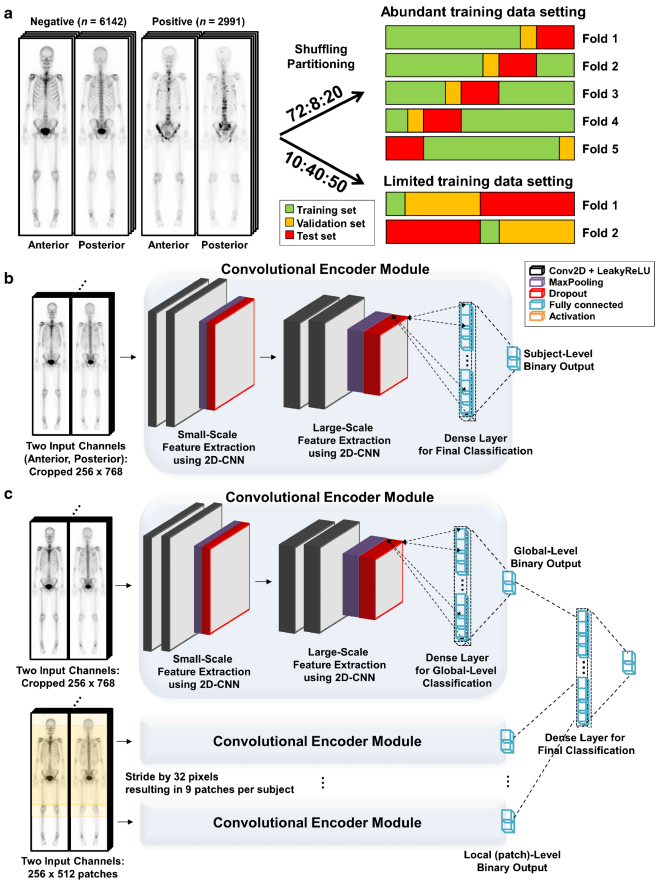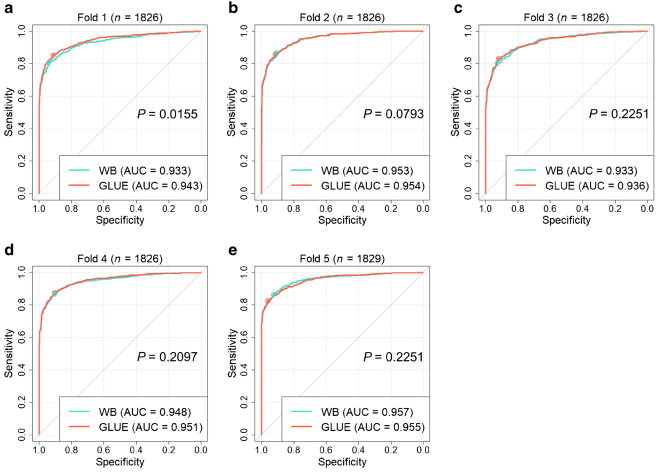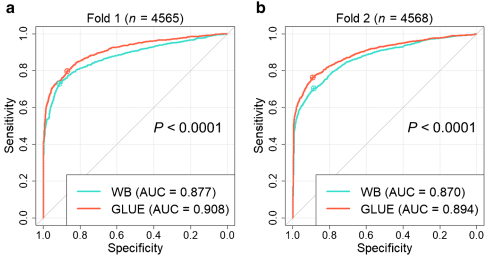글로벌 연구동향
핵의학
- 2022년 03월호
[Eur J Nucl Med Mol Imaging.] Diagnostic performance of deep learning models for detecting bone metastasis on whole-body bone scan in prostate cancer 전립선암 뼈전이 평가를 위한 뼈스캔 딥러닝모델의 진단능울산의대 / 한상원, 오정수*, 이종진*
- 출처
- Eur J Nucl Med Mol Imaging.
- 등재일
- 2022 Jan
- 저널이슈번호
- 49(2):585-595. doi: 10.1007/s00259-021-05481-2.
- 내용
-
Abstract
Purpose: We evaluated the performance of deep learning classifiers for bone scans of prostate cancer patients.Methods: A total of 9113 consecutive bone scans (5342 prostate cancer patients) were initially evaluated. Bone scans were labeled as positive/negative for bone metastasis using clinical reports and image review for ground truth diagnosis. Two different 2D convolutional neural network (CNN) architectures were proposed: (1) whole body-based (WB) and (2) tandem architectures integrating whole body and local patches, here named as "global-local unified emphasis" (GLUE). Both models were trained using abundant (72%:8%:20% for training:validation:test sets) and limited training data (10%:40%:50%). The allocation of test sets was rotated across all images: therefore, fivefold and twofold cross-validation test results were available for abundant and limited settings, respectively.
Results: A total of 2991 positive and 6142 negative bone scans were used as input. For the abundant training setting, the receiver operating characteristics curves of both the GLUE and WB models indicated excellent diagnostic ability in terms of the area under the curve (GLUE: 0.936-0.955, WB: 0.933-0.957, P > 0.05 in four of the fivefold tests). The overall accuracies of the GLUE and WB models were 0.900 and 0.889, respectively. With the limited training setting, the GLUE models showed significantly higher AUCs than the WB models (0.894-0.908 vs. 0.870-0.877, P < 0.0001).
Conclusion: Our 2D-CNN models accurately classified bone scans of prostate cancer patients. While both showed excellent performance with the abundant dataset, the GLUE model showed higher performance than the WB model in the limited data setting.

WB 모델은 전통적인 CNN기반 모델이고, GLUE 모델은 WB 모델에 local patch를 더한 새로운 모델입니다 (그림1)

훈련데이터셋이 많았을때는 딥러닝 성적이 두가지 모델 모두에서 좋았으나(그림2) ,

훈련데이터가 부족한 상황에서는 local patch를 활용한 GLUE 모델이 더 성적이 좋았습니다 (그림3).
Affiliations
Sangwon Han 1 , Jungsu S Oh 2 , Jong Jin Lee 3
1 Department of Nuclear Medicine, Asan Medical Center, University of Ulsan College of Medicine, 88 Olympic-ro 43-gil, Songpa-gu, Seoul, 05505, Korea.
2 Department of Nuclear Medicine, Asan Medical Center, University of Ulsan College of Medicine, 88 Olympic-ro 43-gil, Songpa-gu, Seoul, 05505, Korea. jungsu.oh@gmail.com.
3 Department of Nuclear Medicine, Asan Medical Center, University of Ulsan College of Medicine, 88 Olympic-ro 43-gil, Songpa-gu, Seoul, 05505, Korea. jongjin@gmail.com.
- 키워드
- Bone scan; Computer; Computer-assisted; Deep learning; Image processing; Neural networks; Prostatic neoplasms.
- 연구소개
- 본 연구는 본스캔의 뼈전이 유무를 판별하는 두가지 딥러닝 모델을 구축하고 그 성능을 평가하였습니다.
- 덧글달기
- 이전글 [Sci Rep.] Clinical significance of quantitative bone SPECT/CT in the evaluation of hand and wrist pain in patients with rheumatic disease
- 다음글 [Eur J Nucl Med Mol Imaging.] Trimodality therapy for locally advanced esophageal squamous cell carcinoma: the role of volume-based PET/CT in patient management and prognostication







